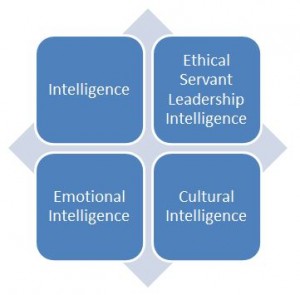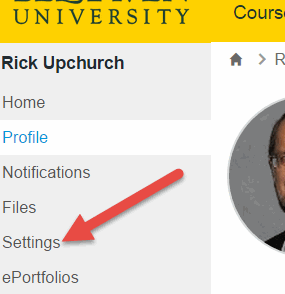Dr. Paul Criss
Dean of Faculty – Memphis and DeSoto
We have all been there. We have had experiences where we felt that someone truly understood where we were coming from and we have also experienced the opposite. The ability to gauge our own and others’ emotional state is called Emotional Intelligence (EQ) and what we do with that understanding can invigorate the adult learner classroom. Most of what follows is a synopsis and application of Goleman, Boyatis, and McKee’s Primal Leadership: Unleashing the Power of Emotional Intelligence (Harvard Business Review, 2013) to adult higher education and was presented at the 2015 Christian Adult Higher Education Association Conference with co-presenter Don Jones, Ed.S.
Instructors have the ability to set the emotional thermostat in their classrooms. Faculty with empathy can allow for supportive emotional connections to emerge within their classes. In Primal Leadership, the authors state: “When leaders drive emotions positively…they bring about everyone’s best.” They call this resonance. When negative emotions are driven, they create dissonance. Negative emotions and moods within a classroom can disrupt work and distract from the task of learning. God designed our brains in such a way to support the “flight or fight” tendency and this may affect classroom performance. Everything our body experiences goes through the first part of the brain at the top of the stem called the amygdala, and you guessed it, the amygdala controls our emotional fight or flight response. If this is triggered, faculty and students alike may have their emotions hijacked. It is likely that we have all experienced a time when we were criticized by an adult learner for upholding a policy or demonstrating a particular instructional style and we had to say a quick prayer for God to give us patience or guard our tongue in how respond to such criticism. We were, with God’s help, resisting this emotional hijacking.
So, how do we adjust the emotional climate of our classroom? Interestingly, emotions, both healthy and unhealthy, are contagious. For example, we have all heard the customer service adage of “service with a smile,” but actually a smile can begin to change the climate. Laughter is addictive and good for everyone – “A cheerful heart is good medicine, but a crushed spirit dries up the bones” (Proverbs 17:22 New Living Translation).
It is a very small leap from what the authors of Primal Leadership discovered about business to what can be applied in the adult learner classroom. For example, for every one percent we increase our service to our students, we could see a two percent increase in their performance (p. 15). This could be evidenced in how we share our expectations of students at the beginning of a course, explaining how we will grade, and how quickly we respond with feedback to our students. Students could respond by exceeding our expectations, targeting specific competencies, and adjusting their performance by our guidance. I know that these kinds of responses would be well received by all of us. The climate – how students feel about studying at a university – may account for twenty to thirty percent of their academic performance (p. 17) and fifty to seventy percent of how students may perceive the university’s climate can be traced to the actions of one person: their instructor (p. 18).
Our daughter, two-year-old Sophia, likes to go into large rooms, project a tone, and see if it echoes. Each room has a certain tone that echoes more than others – the resonating tone; each class has its own resonating tone, as well. In teaching vocal lessons, I learned early on the importance of resonance in amplifying both sweet and sour tones. Sound Engineers use sound equalization, ironically “EQ,” to produce the most amplification while at the same time diminishing feedback. What tones are we projecting that are being amplified to our students? How can we adjust our own and our classroom’s emotional frequency to create the best learning environment for adults?
First we need to understand how not to do it. We must avoid becoming dissonant instructors or dementors. In the Harry Potter novels, J.K. Rowling describes dementors as those who “drain peace, hope, and happiness out of the air around them.” Now, I realize that no instructor would describe themselves in this way, but perhaps a student has perceived us this way. The authors of Primal Leadership describe dissonant leadership as those who “don’t hold true to professed values; lack empathy; this insincerity leads to cynicism and distrust” (p. 23). The best cure for this atmosphere is not only personal, but also corporate, repentance, confession, and forgiveness.
Sometimes this dissonance happens accidentally. For the trekkies out there, have you ever wondered why Kirk is the captain? Kirk brings emotional intelligence to bear on the highly logical Spock and the highly emotional McCoy, creating a balance that is needed. In academia there is a tendency to value IQ over EQ, therefore, emotional intelligence is stifled creating the disparity (“too many spocks and not enough kirkians”). We need to begin to model emotional intelligence ourselves and compel it from our students. Our primary focus, after all, is to be holistic in our educational endeavors – “Love the Lord your God with all your heart, and with all your soul and with all your strength and with all your mind; and love your neighbor as yourself” (Luke 11:42 New International Version.) Albert Einstein said, “We should take care not to make the intellect our god. It has, of course, powerful muscles, but no personality. It cannot lead, it can only serve.”
In Primal Leadership the authors suggest there are various styles of leadership that employ emotional intelligence (p. 55). Two are considered dissonant styles because they are often perceived negatively due to poor execution or overuse. The commanding style may sooth students’ fears in an emergency by providing clear direction and may be used sparingly in a crisis or to deal with problem students. The pacesetting style assists in meeting challenging goals, for example in capstone courses, and may be used judiciously to get high results from competent students.
The authors present four resonant styles that consistently produce positive feedback and are particular productive with the adult learner. The first, the visionary style, moves students toward the shared objectives of the course. This style conveys the importance of the course’s objectives and how achieving these competencies can make a difference in their professional life. The second, the coaching style, connects goals of the particular student with the objectives of the course. This style helps students improve performance and competency by building their personal capabilities. The third, the affiliative style, connects students to other students through community. This style can help heal rifts within a team and motivate students during stressful times within the course. Creating community within the classroom will be discussed in more detail in a future article. The final resonant style, the democratic style, value’s student input and fosters commitment through participation. This style is often utilized during roundtable discussions on topics within the course and not only builds consensus, but allows the expertise of each adult learner to come to the fore and produces exponential learning within the learning environment. As we understand and practice these various styles, we begin to understand the value of emotional intelligence to the adult learner classroom.
Authors Bradbury and Greaves, in Emotional Intelligence 2.0 (TalentSmart, 2009), recommend a matrix to increase personal emotional intelligence. It begins with self- awareness: how aware of our own emotions are we? Emotional self-awareness helps provide accurate self-management and authentic self-confidence. Second, self-management is how one manages his or her own emotions. It determines our transparency, adaptability, and levels of optimism. Third, social awareness is how well we interpret the emotions of others, in this case our students. It determines our organizational awareness, commitment to service, and levels of empathy. Finally, relational management is how well we handle interactions with our class. It assists in creating inspirational instruction, influence, development of our students, managing conflict, and fostering teamwork and collaboration. These authors also recommend the following for developing emotional intelligence within the parameters of this matrix:
Self Awareness
- Focus on you – the only person you can change.
- Get to know yourself under stress.
- Know who and what pushes your buttons.
- Stop and ask yourself why you do the things you do.
Self Management
- Count to Ten.
- Pray for patience or ask the Holy Spirit to guard your reactions.
- Learn a valuable lesson from everyone you encounter.
- Smile and laugh more.
Social Awareness
- Practice the art of listening and observing.
- Step into your students’ shoes.
- Catch the mood of the classroom.
- Greet students by name.
Relationship Management
- Little things mean a lot; when you care show it.
- Explain your decisions, don’t just make them.
- Make your feedback direct and constructive.
- Be accessible; have an open door policy to build trust.
Jesus was an emotionally intelligent leader. This is indicated several times as He gauged others’ emotional state – “Jesus would not entrust himself to them, for he knew all people” (John 2:24 New International Version) and He declared himself to be the one “who searches hearts and minds” (Revelation 2:23). Christ acknowledges the worst in humanity, but, in spite of this, He brings out the best by giving of Himself. If we simply observe the team He inspired, we can see how they changed the world. As instructors of adult learners, we are called to do the same.


 fore getting started, however, I highly recommend going to your personal settings within Canvas and take care of two tasks: First, make sure you have uploaded a picture and bio. Students should expect their
fore getting started, however, I highly recommend going to your personal settings within Canvas and take care of two tasks: First, make sure you have uploaded a picture and bio. Students should expect their  Instructors to have completed this task and they can read through this information, enhancing your credibility. Second, go to settings and “Register” your Google Drive (gmail) account. This does not give Canvas access to your Google Drive documents, but it does facilitate your ability to set up collaborations with your students. Students should also be encouraged to register their Google Drive so that they can access the collaboration features available in Canvas.
Instructors to have completed this task and they can read through this information, enhancing your credibility. Second, go to settings and “Register” your Google Drive (gmail) account. This does not give Canvas access to your Google Drive documents, but it does facilitate your ability to set up collaborations with your students. Students should also be encouraged to register their Google Drive so that they can access the collaboration features available in Canvas. . You can set up as many groups as you like. Once the group is set up you can manually drag members into the groups or use the + by their name to select the group where you would like them. Setting up a group leader is as easy as clicking on the gear icon by a name and selecting “set as group leader.” This is usually a good idea as it gives the group better autonomy to move around within the site.
. You can set up as many groups as you like. Once the group is set up you can manually drag members into the groups or use the + by their name to select the group where you would like them. Setting up a group leader is as easy as clicking on the gear icon by a name and selecting “set as group leader.” This is usually a good idea as it gives the group better autonomy to move around within the site.